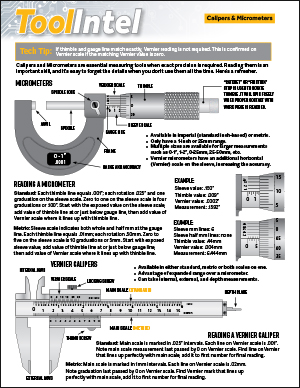Stuck ABS Sensors
On some Honda and Toyota models, you have to be careful with any ABS sensors. If they’re stuck in the housing, it may be a better strategy to leave them in place and unplug them from the harness; and be careful with them as you work on the bench. I like to tell my guys to think about putting the job back together as they’re taking it apart. It’s easier to clean up the threads on a tie rod end before it’s removed from its taper, than it is later. A couple of extra minutes during disassembly can pay dividends on the other end.
Honda CR-V & Pilot Rear Brakes
Another complaint that is often misdiagnosed as a brake problem is a noise when turning from the rear of the popular CR-V and Pilot models. This noise when turning at low speeds is actually coming from the rear differential. On these models, only the Honda “dual pump” oil can be used. Changing the oil will take care of the noise.
We’ve also had some issues on the CR-Vs with a groaning noise coming from the rear drum brakes. This noise was tracked down to the hardware losing its ability to hold the shoes against the backing plate. We now replace this inexpensive hardware with every shoe replacement.
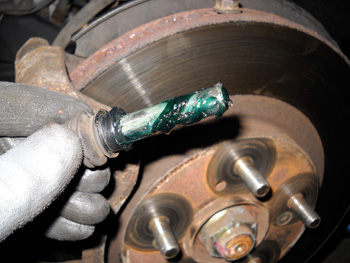 Make Sure Every Part is Free
Make Sure Every Part is Free
With the bleeders open, the pistons should return with little effort; if not, consider a pair of replacement calipers. If the problem doesn’t appear to be the calipers, check for the pads sticking in the caliper brackets, and don’t overlook the slider pins as a source of binding.
We have to keep in mind how important smooth mechanical operation is to the braking system. Remember that we have more than 1,000 psi applying the brakes, and we’re relying only on caliper piston seals and mechanical condition to release them. I’m sure you’re going to inspect the rear brakes before the estimate is written. Again, be sure everything is operating freely. Don’t overlook the rear wheel cylinders for smooth operation that’s critical, just like on the front. If the shoes are good, there’s no reason to disassemble, but push on the pistons to be sure the cylinders aren’t frozen. If the shoes are worn, don’t forget those good work habits and be sure to free up and lube the contact areas of the backing plate, as well as all the adjustment and handbrake hardware.
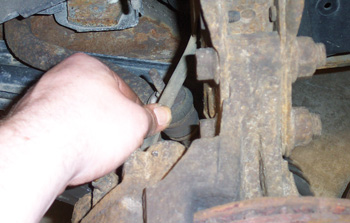 Excessive Wear on Brakes
Excessive Wear on Brakes
While certainly not a common problem on Kias, it’s possible that you could encounter a situation where there is pressure in the line when the pedal isn’t depressed causing excessive wear. This could be caused by too little clearance in the master cylinder push rod, but this problem usually shows up only after the vehicle is driven and the brake fluid heats up. Or you could have a brake hose with an internal failure that is acting like a one-way valve holding pressure at the caliper. Any of these problems are easy to diagnose if they can be duplicated. Opening the bleeder valve will release any pressure in the caliper.
To confirm the hydraulic system is the problem and to help pinpoint where the problem is, firmly apply the brakes and release them to put pressure in the system and work backward from the caliper, loosening connections to find the restriction.
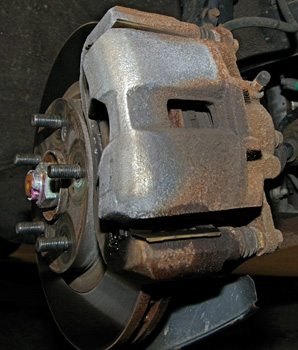 Notes on Wear are Some of the Best Diagnostic Tools
Notes on Wear are Some of the Best Diagnostic Tools
We sell our customers on preventive maintenance with the idea that together we can help prevent surprises by keeping an eye on wear items and anticipating services needed. If the car was on the lift recently and there was no notation that the pads were getting close, it can only mean a couple of things: The vehicle had a failure that caused excessive brake wear, or the worn brake pads weren’t noted at the last service. If they weren’t noted and all the pads are worn, it’s time to remind the tech that our clients rely on us to keep an eye on the overall condition of their car — that was the deal we made. Bring us your car and we’ll take care of it to the best of our ability. In my mind, that includes catching anticipated, necessary services.
Replace the Brake Hose if the Caliper has Over Heated
If you are replacing a caliper that has locked up and created a great deal of heat, you should also replace the brake hose. This is a good practice anytime, but particularly important with the Honda line as there have been some instances of the hose failing at the caliper fitting after being subjected to the extreme heat.
Bob on Bearing & Brake Noise
If there is no change to what you think is a bearing noise during turns, it’s an indication there may be another problem disguising itself as a bearing. Anything that can feed a vibration into the chassis could be the problem, from worn engine mounts to mis-routed A/C lines or, in the case of SUVs, don’t discount the rear differential and driveshaft as a source. If any doubt exists, our final step of the diagnostic process includes running the vehicle on the lift and pinpointing the problem with a stethoscope.
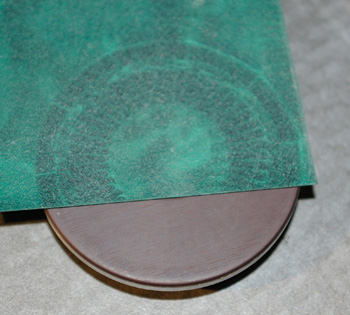 Quiet Car, No ABS
Quiet Car, No ABS
When replacing a wheel bearing on an ABS-equipped vehicle, be careful that the bearing is installed in the correct direction. With the ABS encoder being internal, if it’s installed “backward,” you will have a nice quiet car with the ABS lamp lit. You can identify the proper bearing direction by the color of the seal. On most models, the brown seal goes toward the axle, but be sure to check. Also, bearing manufacturers make special magnetic tools to identify what side encoder is on.
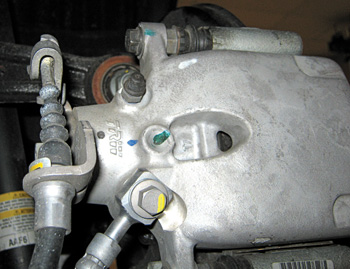 Inspection of rear disc brakes
Inspection of rear disc brakes
Most rear disc cars use the familiar turn back-type caliper with the rear disc brakes. What we’re looking for here is even wear of the pads. Check the hand-brake system to make sure it’s operating freely, and check the condition of the cables. Are the protective rubber boots still intact, or can you see the rust on the inner cable? If the cable looks good, unhook it from the caliper to confirm its condition as well as to check for binding in the mechanical part of the caliper.
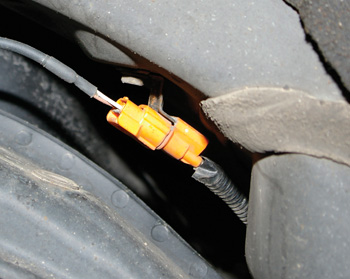 Brake Light Grounds
Brake Light Grounds
Another problem that seems to be a bit more common on rust belt cars are issues with bad ground circuits that lead to the brake lights and rear lights. Should you encounter a vehicle that has a group of codes yet the components and circuits seem good, or a car where the temp gauge is reporting a false high reading, suspect a bad ground circuit. The grounds are easily located with access to the factory service information. While you can perform voltage drop tests on the circuits, we find it more efficient to simply locate and clean the connections rather than hope we can catch the problem on a meter.
Early KIA ABS Codes and Free Service Information
The Kia ABS has proven to be very reliable, but that doesn’t mean you’ll never see an ABS lamp lit. On earlier Kia models, codes can be accessed by jumping the test connector that you’ll find under the hood near the brake booster. Codes will be flashed out on the ABS light in the familiar long- and short-system with the long flashes representing tens and the short flashes calling out the ones. You’ll get a 12 code as a start code that doesn’t indicate any fault. Use your service info system or www.kiatechinfo.com to get code definitions.
KIA Sportage Manual Replacement Hubs
Should you find yourself in the position where replacement hubs are required, or if the customer values reliability over convenience, consider changing over to the almost-bulletproof aftermarket manually operated hubs. If you do go with the manual hubs, be sure to seal any of the vacuum fittings on the hubs to prevent debris from getting into the hubs, and disconnect the supply solenoid to prevent a manifold leak when 4WD is selected. Removing and replacing the hubs is a simple job that shouldn’t be too challenging for any level tech. However, while you’re going in there, it’s a good time to service the wheel bearings or, at the very least, make any bearing adjustment that’s required.










